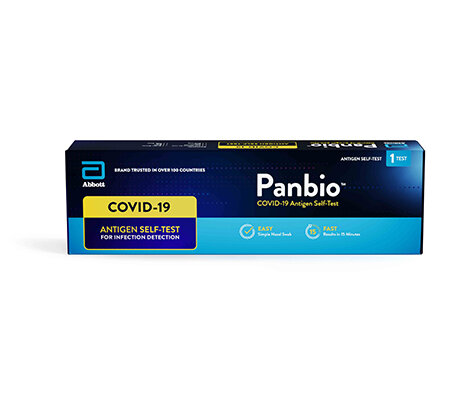Pathology

Blood Test Predicts Response to Immunotherapy in Metastatic NSCLC
Non-small cell lung cancer (NSCLC) patients with higher measures of tumor mutations that show up in a blood test generally have a better clinical response to PD-1-based immunotherapy treatments than patients with a lower measure of mutations. More...10 Mar 2020

Esophageal Cancer Precursor Detected by Electronic Nose Device
Barrett's esophagus is a condition in which the lining of the esophagus changes, becoming more like the lining of the small intestine rather than the esophagus. This occurs in the area where the esophagus is joined to the stomach. More...10 Mar 2020

Heterogeneous Populations of Melanoma Circulating Tumor Cells Detected
Circulating tumor cells (CTCs) can be assessed through a minimally invasive blood sample with potential utility as a predictive, prognostic and pharmacodynamic biomarker. The large heterogeneity of melanoma CTCs has hindered their detection and clinical application. More...02 Mar 2020

Severe Strongyloidiasis Infection Reported in Kidney Transplant Recipients
Strongyloides stercoralis is a soil-transmitted human pathogenic parasitic roundworm causing the disease strongyloidiasis. It is found in tropical and subtropical regions worldwide. Many people infected are asymptomatic at first. Symptoms include dermatitis: swelling, itching, larva currens, and mild hemorrhage at the site where the skin has been penetrated. More...25 Feb 2020

Proteogenomic Characterization of Endometrial Carcinoma Analyzed
Endometrial cancer is a cancer that arises from the endometrium which is the lining of the uterus or womb. It is the result of the abnormal growth of cells that have the ability to invade or spread to other parts of the body. More...24 Feb 2020

All-Digital Histopathology Attained by Infrared-Optical Hybrid Microscopy
The gold standard of tissue pathology is to add dyes or stains so that pathologists can see the shapes and patterns of the cells under a microscope. However, it can be difficult to distinguish cancer from healthy tissue or to pinpoint the boundaries of a tumor, and in many cases diagnosis is subjective. More...24 Feb 2020
In Other News
Lung Adenocarcinoma Genomic Features Differ in East Asians, Europeans
Blood Test Lead to Earlier Detection of Gastrointestinal Cancers
Lung Cancer Liquid Biopsy Guides MRD-Directed Adjuvant Therapy
Single-Cell Sequencing Identifies Breast Cancer Risk
Heart Transplant Monitoring Test Validated
Microbiota’s Role Explored in Colorectal Cancer Among the Young
Technique Predicts Cancer Recurrence Risk for Melanoma Patients
Imaging Mass Cytometry Uncovers Novel Breast Cancer Subgroups
Ovarian Cancer Protein Contributes to Alzheimer`s Disease Neurodegeneration
Homologous Recombination Defects Prevalent in African-American Cancer Patients
Genome-Wide Association Leads to Heart Failure Risk Loci
Helicobacter pylori Triggers Development of Stomach Disease
Prostate Cancer Diagnosed Better Using Artificial Intelligence
Diagnostic Biomarker Found for Esophageal Squamous Cell Carcinoma
21-Gene Recurrence Score Helps Radiation Decision-Making
Molecular Characteristics of Leptomeningeal Melanoma Metastases Identified
Patterns of Circulating MicroRNAs Characterize Lack of Sleep in Children and Adolescents
Tumor DNA Platform Classifies Colorectal Cancer
Plasma HSP90α Levels Used for Detection of Hepatocellular Carcinoma
Urinary Cell-Free DNA Detects Urothelial Carcinoma
Cardiac Blood Test Predicts Post-Surgical Outcomes
Extrachromosomal Circular DNA Drives Oncogenic Genome Remodeling in Neuroblastoma
Liquid Biopsy Detects Breast Cancer Residual Disease
The Pathology channel details advances in the field of Surgical Pathology and all its subspecialties, including Cytopathology and its subspecialties.










